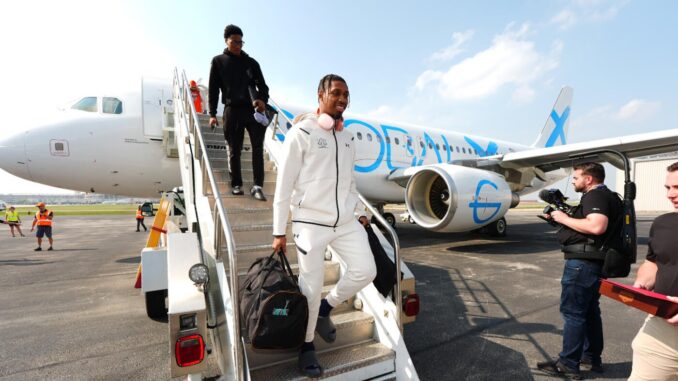
COURT INTERFERES: Auburn Transfer Lands Major NIL Deal After Contract Dispute, Joins USC
In a developing saga that underscores the growing influence of Name, Image, and Likeness (NIL) rights in college athletics, a former Auburn men’s basketball player has landed a significant NIL deal following a breach of contract dispute with his former team. The situation, now making headlines across the NCAA landscape, has sparked conversation about the evolving dynamics between players, schools, and the burgeoning NIL marketplace.
The unnamed player, a former high-profile recruit, reportedly entered into an NIL agreement during his time at Auburn. However, a contractual breach by a key stakeholder—believed to be either an affiliated collective or university sponsor—led the athlete to challenge the terms of the agreement. After months of tension, the case escalated and was taken to court, where a judge ruled in favor of the athlete. The court found that the NIL deal was not honored in full, resulting in a breach that entitled the player to compensation.
In response to the breach, the player was granted the opportunity to pursue new NIL opportunities without penalty and entered the transfer portal. His next move? A high-profile commitment to the University of Southern California (USC), where he has now reportedly signed one of the most lucrative NIL deals in college basketball to date.
Industry insiders estimate the new NIL agreement to be worth upwards of seven figures, featuring endorsements, brand partnerships, and media appearances. According to sources close to the deal, multiple agencies competed to secure representation for the player once it became clear he was transferring. USC, known for its strong NIL infrastructure and media market in Los Angeles, was a natural fit.
The incident has sparked debate among coaches, fans, and legal experts over the need for stricter NIL guidelines and clearer enforcement mechanisms. Some argue the NCAA’s current NIL framework is too ambiguous, leading to uneven interpretations of contract obligations between athletes and affiliated partners.
“What we’re seeing is a lack of structure around NIL enforcement,” said one sports law expert. “When contracts are broken, players are left to fend for themselves legally, which shouldn’t be the case in a regulated system.”
USC’s head coach expressed support for the athlete, emphasizing the importance of protecting student-athletes’ rights in the NIL era. “He did everything by the book and was let down by those who were supposed to support him. We’re proud to have him here and believe he’ll thrive both on and off the court.”
This case sets a precedent for how courts might treat NIL disputes going forward and highlights the leverage student-athletes now have in the college sports economy. As more players become business-savvy and legal protection becomes a necessity, schools will likely need to bolster their compliance departments and reexamine the partnerships they engage in on behalf of athletes.
With the 2025-2026 college basketball season approaching, all eyes will be on USC—not just for their performance on the court, but for how this landmark NIL move might reshape the game’s financial and legal future.
Would you like a visual timeline or infographic summarizing this case?
Leave a Reply